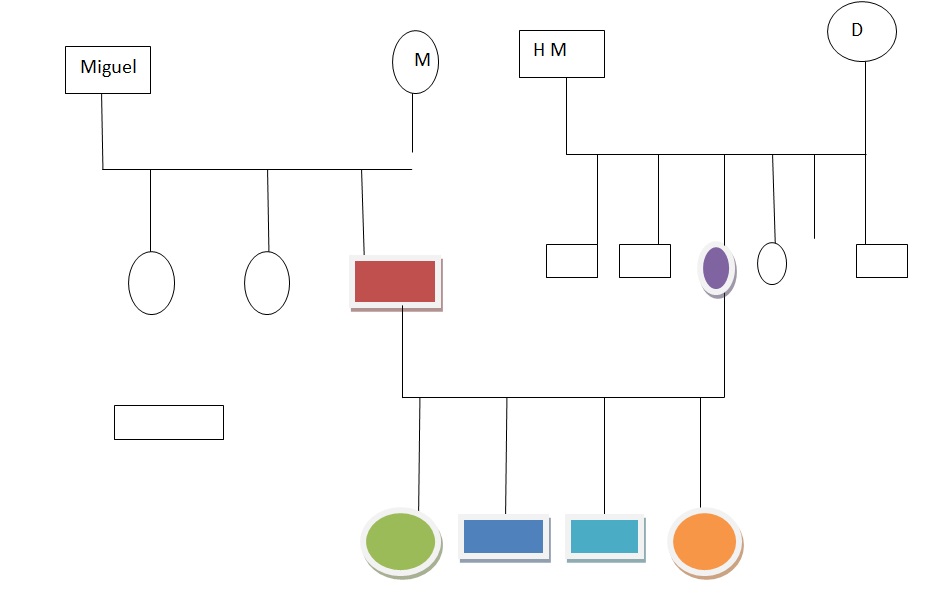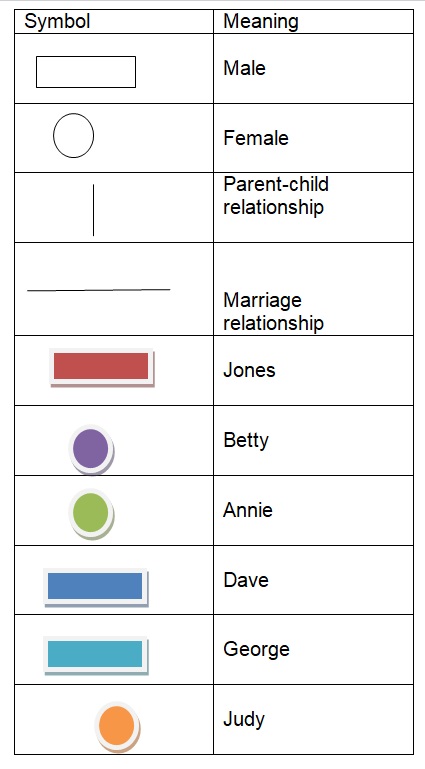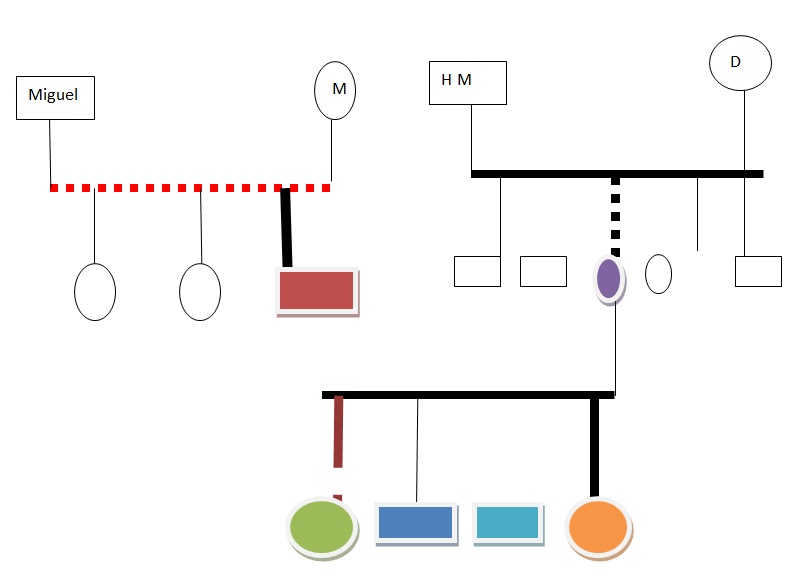Introduction
Jones family is a nuclear family living in New Harlem neighborhood in the state of New York. Specifically, this paper seeks to use the family in order to achieve three main goals. First, the paper seeks to examine the impacts of functional patterns and role structure of the family. Secondly, the analysis will examine family relationships and communication patterns. Finally, the review will attempt to identify various factors associated or affecting health promotion in the selected family.
Description of nuclear family form
As mentioned above, Jones family is a nuclear family made up of six people. The couple, Jones and Joyce, has four children aged between 6 and 17 years. Annie is the couple’s first child. She is 17 years and a student at a local university, where she is taking a degree course in mass communication and journalism. The second child is Dave, aged 13 years and a fresh high school graduate but expecting to join a prestigious university. George, the third child, is about 9 years and a student at a local elementary school. The final child, Judy, is 6 years old.
Social-cultural data analysis
Jones family is an example of a modern American family characterized with a number of social and cultural aspects. First, it is worth noting that Betty and Jones belong to different ethnic backgrounds. While Jones is a Caucasoid, Betty is a Hispanic American whose parents emigrated from Mexico some 40 years ago. Nevertheless, she was brought up in California, Virginia and Texas. She was educated in Texas and Massachusetts. On his part, Jones was brought up in Texas until he joined his first university in New York. They met in New York some 20 years ago.
Therefore, the ethnic classification of the family is mixed up. While Jones and the wife are white and Hispanic respectively, the children are considered Hispanic as per the social norms in the US. Thus, the family is considered a cross-cultural institution that represents more than one ethnic group.
Genogram and ecomap
Genogram


Ecomap

Ecomap
As the ecomap above shows, the inner circle relationships between various individuals vary significantly (Schilson & Braun, 2009). The relationships marked by strong black connector are strong. This suggests that the relationship between Jones and his wife is very strong. The same also applies to the relationship between Jude and her parents as well as siblings.
Inside Jones’ family, the relationship between Annie and her parents is relatively weak. Recently, she has started complaining that her parents are becoming “too much” and “spying on me”.
Environment
Most of their neighbors are whites but with a good representation of other ethnicities, especially foreigners with better jobs in the city. In addition, Jones family owns a 6-bedroom bungalow, which is one of the several family units built five years ago by a contractor on behalf of a mortgage corporation. Jones and his wife, together with other neighbors, purchased these units.
The community is made up of families, but a few unmarried individuals occupy some units. Jones’ neighbors are couples with at least two children per family. Other families have children aged between 1 and 30 years.
Communication
The communication between Jones and his wife is relatively good, effective and sustainable. There is little, if any, disagreement between them. However, he has almost lost communication with Annie. On the other hand, his wife and Annie have quarreled several times due to Annie’s deviance.
Power structure
Jones’ family is defined by a compressive power structure. Despite being the husband and father, Jones always takes his wife’s advice and suggestions strictly. Most of the times he is in his laboratories and research institutes both locally and abroad. Thus, the wife acts as the head of the house, giving her children instructions. She expects them to abide by her authority. Annie has started defying some of her mother’s orders.
Role structure
Jones and his wife are the main providers for their family needs. They pay for their children’s education, lifestyle, leisure, food and other needs. Betty, a stout catholic and Mexican, has refused to let her husband take some responsibilities such as cooking, serving, cleaning or other tasks considered feminine.
Spiritual activities
Although Jones is a Judaist, his wife is a stout catholic. In fact, she has ensured that the children attend church and church activities. She hates secular life and often quarrels with the children over spiritual matters.
Norms and Rules
Betty teaches Jude and Annie some lessons in housekeeping. She also supports George and Dave, especially in sports. Jones has been taking the role of mentoring his children, especially in academics. It is worth noting the fact that he is a university professor.
Socialization
As mentioned, much of the work of child rearing is performed by Betty. She has refused to hire a house help, arguing that housemaids do not perform the right job in the right way. She says that they are likely to corrupt her children’s morals. She performs most other activities such as cleaning but gets help from Annie. Dave cleans for himself and even helps his younger brother.
Several social and family support and network systems are available in the house. Betty supports her children’s career and education. When Jones is away, she takes the children out for recreation, especially at McDonald’s, Burger King and swimming pools.
Adaptation
Betty believes that solving conflicts through dialogue is the best thing she can do for her family. Jones has left these roles to her. Financial problems, whenever they occur, are solved collectively, with Jones providing the best solutions because he is a good financial manager. They also seek the help of Jones’ brother, who is an accountant and a leading corporate manager in Hawaii. Dysfunctions sometimes occur in the family. For instance, dialogue has recently failed to solve the conflict between Betty and Annie. Annie has resolved to keep quiet as her mother shouts at her.
Healthcare
The family has a doctor who looks into their health matters. Nevertheless, all the children are covered by their parent’s medical programs at the workplace, although Annie is almost 18 years.
Interventions
The family has a well organized health support system. There are few problems, if any, with their health program. Both parents are working and able to provide for their children. However, it is advisable that they start supporting Annie to take her healthcare program since she is almost 18 years.
Perceived severity and susceptibility are likely to affect the health belief model in the family (Janz & Becker, 2008). For instance, it is important to assess the severity of a given health problem that may affect the family. It is also important to carry out an assessment of the possible consequences of a given heath threat (Rosenstock, 2009). For example, Jones is likely to develop prostate cancer or diabetes because his family line is known to have these problems. Thus, health risks should be assessed to determine his susceptibility levels.
Conclusion
The family is an example of the modern American families that have retained the American traditions while also adopting modernity, where the father and the mother share various responsibilities to bring up their four children.
References
Janz, N. N., & Becker, M. H. (2008). The Health Belief Model. Health Education Behavior 11(1), 1–47.
Rosenstock, I. (2009). Historical Origins of the Health Belief Model. Health Education Behavior 2(4), 328–335.
Schilson, E., & Braun, K. (2009). Use of genograms in family medicine: A family physician/family therapist collaboration. New York: Springer.